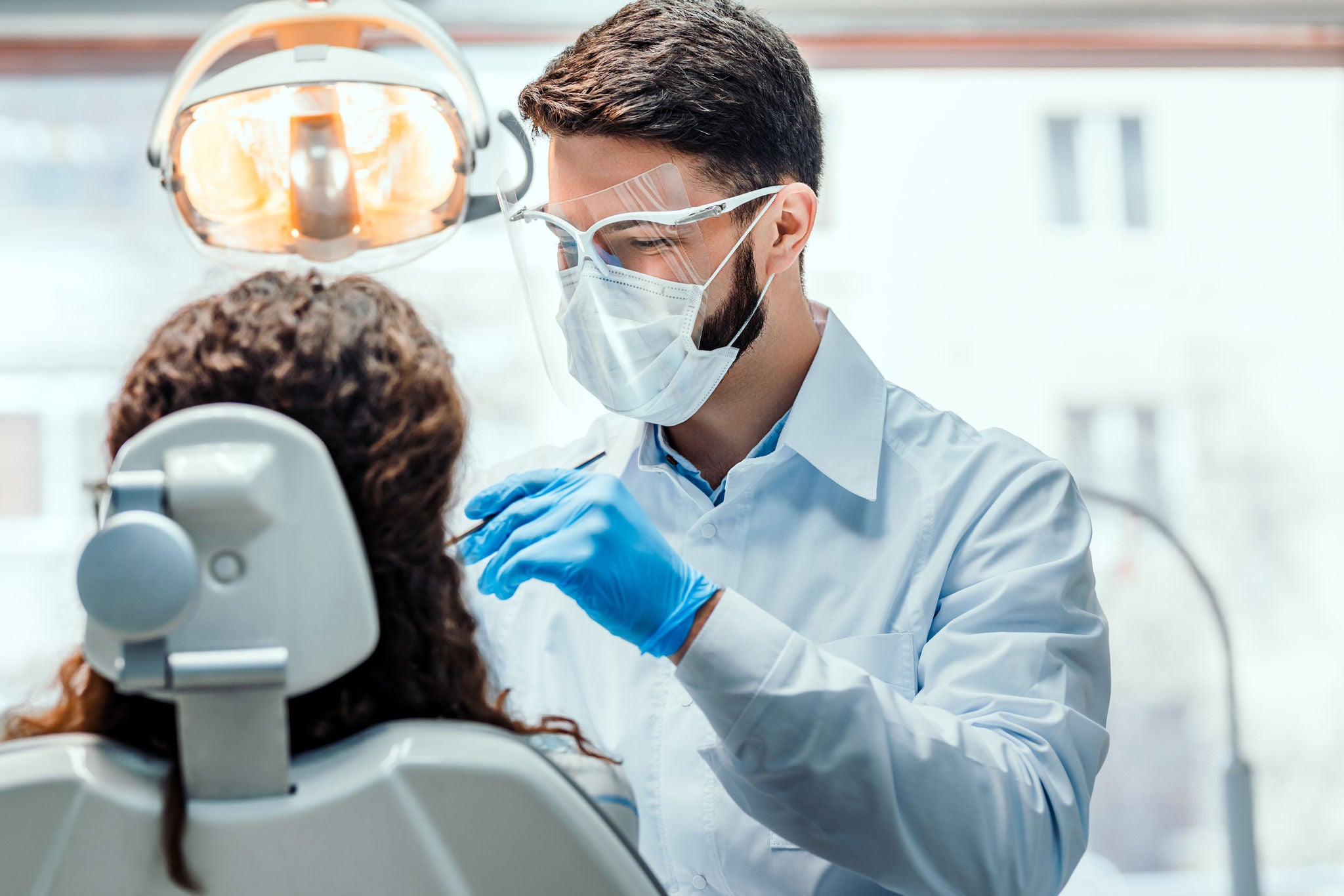
How Factors Related to Dentition Affect Periodontal Disease
Recent studies have reiterated that dentition-related issues increase a person’s risk of developing periodontal disease.
These dentition-related issues are considered one of several “miscellaneous factors” that together form one of the five clusters of risk factors that determine a given patient’s susceptibility to periodontal disease.

All five of the risk factor categories are:
- The presence of subgingival bacterial biofilm on both the tooth root surface and epithelial lining
- Genetic risk factors and epigenetic modifications
- Lifestyle-related risk factors
- Systemic diseases
- Miscellaneous factors that include local and dentition-related factors
The relative contribution of each of these factors to an individual’s risk of developing periodontal disease varies widely from individual to individual. Some patients may possess some combination of all five risk factors and still not develop periodontal disease, while others may develop the disease with only two or three of the factors present.
For example, if a patient practices proper oral hygiene and therefore has limited plaque build-up, but has a disadvantageous genetic predisposition or an underlying systemic condition, they could still be at greater risk than a patient with major plaque buildup but without genetic risks or systemic disease. This is true for all five risk factors, so the relative contribution of dentition-related factors always needs to be considered in perspective to the other factors.
If your patients have any of the following questions about how dentition-related factors could affect their risk for developing periodontal diseases, here’s what you can tell them:
What are dentition-related factors?
1) Anatomy and position of the teeth
“Dentition-related factors” are related to all tooth anatomical factors, tooth inter-relationships within the dental arch, and between arches and dental treatments that can induce or enhance plaque retention, and as such, increase the risk of periodontal disease.
Anatomical factors in the mouth linked to an increased risk of periodontal disease include cervical enamel projections, enamel pearls, developmental grooves, root proximity, abnormalities and fractures within individual teeth, tooth relationships in the dental arch, open interproximal contacts that lead to chronic food impaction, and abnormal dentoalveolar relationships associated with altered passive tooth eruption.
Examples of localized tooth-related factors that may modify or predispose patients to plaque-induced gingival diseases/periodontitis include:
- Tooth anatomic factors (such as crowding or spacing)
- Root fractures
- Cervical root resorption and cemental tears
- Root proximity
- Altered passive eruption
2) Prosthesis
The use of dental prosthetic devices may increase a patient’s risk of periodontal diseases when those devices are improperly installed or maintained, or when a patient has an adverse hypersensitive reaction to the materials used in their construction:
Improper hygienic maintenance of prostheses
The infringement of restorative margins with supracrestal connective tissue attachment has been associated with inflammation and the loss of periodontal supporting tissue, but it is not evident whether the negative effects observed on the periodontium are caused by dental plaque biofilm, trauma, toxicity present in the dental materials in question, or a combination of all three factors.
Furthermore, though there is some evidence to suggest that tooth-supported/retained restorations and their design, fabrication, delivery, and materials can be associated with plaque retention and loss of clinical attachment, the available evidence does not support the conclusion that either fixed or removable dental prostheses are associated with an increased risk of periodontitis if they are applied and cared for optimally.
Instead, evidence only points toward an increased risk of periodontal disease for prosthetics wearers if prostheses wearers do not practice adequate dental hygiene. In particular, removable dental prostheses not properly cared for could act as dental plaque biofilm retentive factors.
Hypersensitive reactions to prostheses
Some patients may also have hypersensitive reactions to dental materials used in prostheses. In some cases, this may result in localized inflammation that does not respond to plaque control measures. Limited in vitro evidence also suggests that selected ions liberated from dental materials into the mouth via prosthetic use may adversely affect cell viability and function.
Many dentition-related factors, including teeth that naturally grow in crowded, occur for unavoidable genetic reasons, but they may also occur as a result of modifiable behavior. For example, certain habits in childhood are considered risk factors: using a pacifier or sucking on the thumb or fingers past the age of three can increase risk of crooked teeth and misaligned jawbones.
Modifiable adult behavior can also cause teeth to shift. For example, sleep bruxism (or teeth grinding), which occurs in approximately 13% of adults, can cause damage to both the teeth and jaw that can lead to dentition shifting over time. Bruxism may also lead to masticatory muscle hypertrophy, tooth surface loss, fracture of restorations or teeth, hypersensitive or painful teeth and loss of periodontal support.
Traumatic occlusal forces lead to adaptive mobility in teeth with normal support, whereas they lead to progressive mobility in teeth with reduced support, usually requiring splinting.
Many dentition-related factors that could increase risk of periodontal disease also occur as a result of face, jaw, or mouth injury. Stress to patients that even appear as minor injuries around the jaw, mouth, and face can drastically affect how the teeth fit together, so any patients that suffer these injuries should see a dentist as soon as possible. It is also possible that old injuries that were never treated may have altered the growth or positioning of a patient’s teeth in the past.
Improper installation or shifting
Improper placement of restorations, such as overhanging or over-contouring of restorations, or their shifting in time may promote dental biofilm retention and localized periodontal lesions.
Gaps between teeth, or other dentition-related irregularities such as tooth anatomy, cervical enamel projections, root concavity, fractures, cross-bite, tooth rotation, and root proximity may create open contacts that are difficult for patients to reach and clean properly, allowing bacteria to accumulate and affect surrounding periodontal tissues.
The natural reaction of the body to the presence of bacteria in the mouth is inflammation, possibly leading to gingivitis. The longer the pathogenic bacteria can adhere and proliferate without interruption, the greater the risk that gingivitis will advance to periodontitis.
The degree to which dentition-related irregularities such as crowding will affect a patient’s susceptibility to periodontal disease varies widely. In general, however, it is accurate to advise that the more dentition-related irregularities a patient has, the more they will contribute to that patient’s susceptibility to periodontal diseases.
Likewise, infringement of restorative margins within the supracrestal connective tissue attachment can be associated with inflammation or loss of periodontal supporting tissue if they are not properly installed or cared for.
An adequate emergence profile of restorations is key for avoiding plaque accumulation and plaque-induced gingival inflammation and allowing appropriate self-performed plaque control.
Anatomy and position of teeth
Orthodontic treatment can be recommended for patients with dentition-related factors significant enough to increase risk of periodontal disease. In such cases, orthodontia is not only an effective measure for reducing risk of periodontal disease, but it will often also improve the patient’s jaw and overall oral health in the long term by improving the occlusion and jaw functions.
Prostheses
Any fixed or removable prostheses that retain plaque or do not allow patients to clean correctly should be corrected, readapted, or reinstalled. Patients wearing protheses that are optimally placed should be encouraged to ensure they keep their protheses clean and schedule regular maintenance appointments to ensure continued optimal placement.
Traumatic occlusal force
Although literature shows mitigated impact of the occlusal factor, traumatic occlusal forces need to be addressed to avoid further risk of loss of periodontal support. In the case of bruxism, mouthguards can help relieve the clenching and grinding of the teeth that could otherwise cause tooth fracture, tooth wear and tooth mobility.
Patients should be encouraged to take steps to avoid tooth and jaw damage whenever partaking in activities that could potentially damage either.
Though many dentition-related factors may be out of patients’ hands, such as their genetic predisposition to crowding or anatomy, there are many factors patients and dentists can and should control. Oral hygiene and the possibility to allow it always remain at the top of this list.
Explore more articles below or find content tailored to your needs on our website, under the "news" section.

